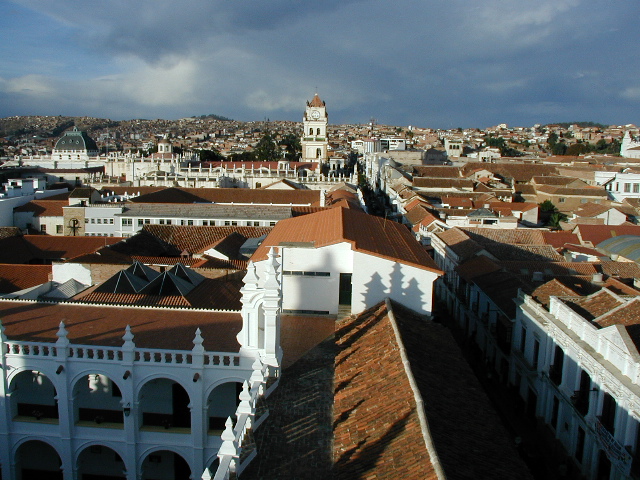We flew into Salta from Santa Cruz on possible the most empty flight I have ever been on, seriously like 20 people in a plane that could have carried like 80 to 100. Once in Salta we checked into our hostel and made for food. Now this has been our issue with Argentina, the food is not very vegetarian friendly as I am sure we would all expect from a country that revolves around beef. Anyways the full force of that reality hit during lunch. The few things we could try are generally ruined by too much cheese, pizza and empanadas. We turned to self catering, fresh vegies, pasta and corn on the cobb but that is only possibly if there is a kitchen where you are staying.
Anyways we went on a day trip to the Salt Flats whilst in Salta. We drove through some amazing desert to get there. Had fun with the camera taking fun shots, however it was freezing and really windy.
 After Salta we took a 4hour bus to Cafayate, a wine district near some more really fabulous desert. Another half day trip took us into the desert to the rock formations and gorges. Wine was tasted and empanadas eaten at the House of Empanadas, the first place with actual vegetarian food, not just cheese. It was fabulous till the second day when Bron got sick and threw up. This has been the case pretty much since, she has had pretty much a permanent stomach ache and our initial struggle with food became that much worse. So the second day at Cafayate was spent inside or on the roof in the sun in hammocks.
After Salta we took a 4hour bus to Cafayate, a wine district near some more really fabulous desert. Another half day trip took us into the desert to the rock formations and gorges. Wine was tasted and empanadas eaten at the House of Empanadas, the first place with actual vegetarian food, not just cheese. It was fabulous till the second day when Bron got sick and threw up. This has been the case pretty much since, she has had pretty much a permanent stomach ache and our initial struggle with food became that much worse. So the second day at Cafayate was spent inside or on the roof in the sun in hammocks.
We booked bus tickets to Igauzu Falls before Bron got sick and decided to keep on that track, a 6ish hour bus was therefore on the cards for th
 e next day to a city called Tucumon where we had to overnight it before the 22 and a half hour bus ride the following day to the Falls themselves.
e next day to a city called Tucumon where we had to overnight it before the 22 and a half hour bus ride the following day to the Falls themselves.Iguazu was definitely worth it though, we spent about 4 hours walking in the national park in awe of the sheer magnitude and beauty of them.
The next day we were on another 20ish hour bus to Buenos Aires which is where I am now.
We spent the day after arriving in the morning walking the city taking photos of artitecture and monuments. We walked through Plaza de Congress, and to the Oblisc. We then went a bit further to La Recoleta Cemetry, where all the who´s who of Argentina are buried, including Evita. We finished off the day with a Tango show that was satisfactory, there should have been much more live music and dancing and much less theatrics and singing. However, it could have been worse.

As Bron is still really quite unwell we are flying home in the next couple of days so this will be the last blog that I write. My South American holiday has definitely been a life chaging experience. However, due to our not so awsome time in Argentina I leave wanting to go no other place than home!!!!!















